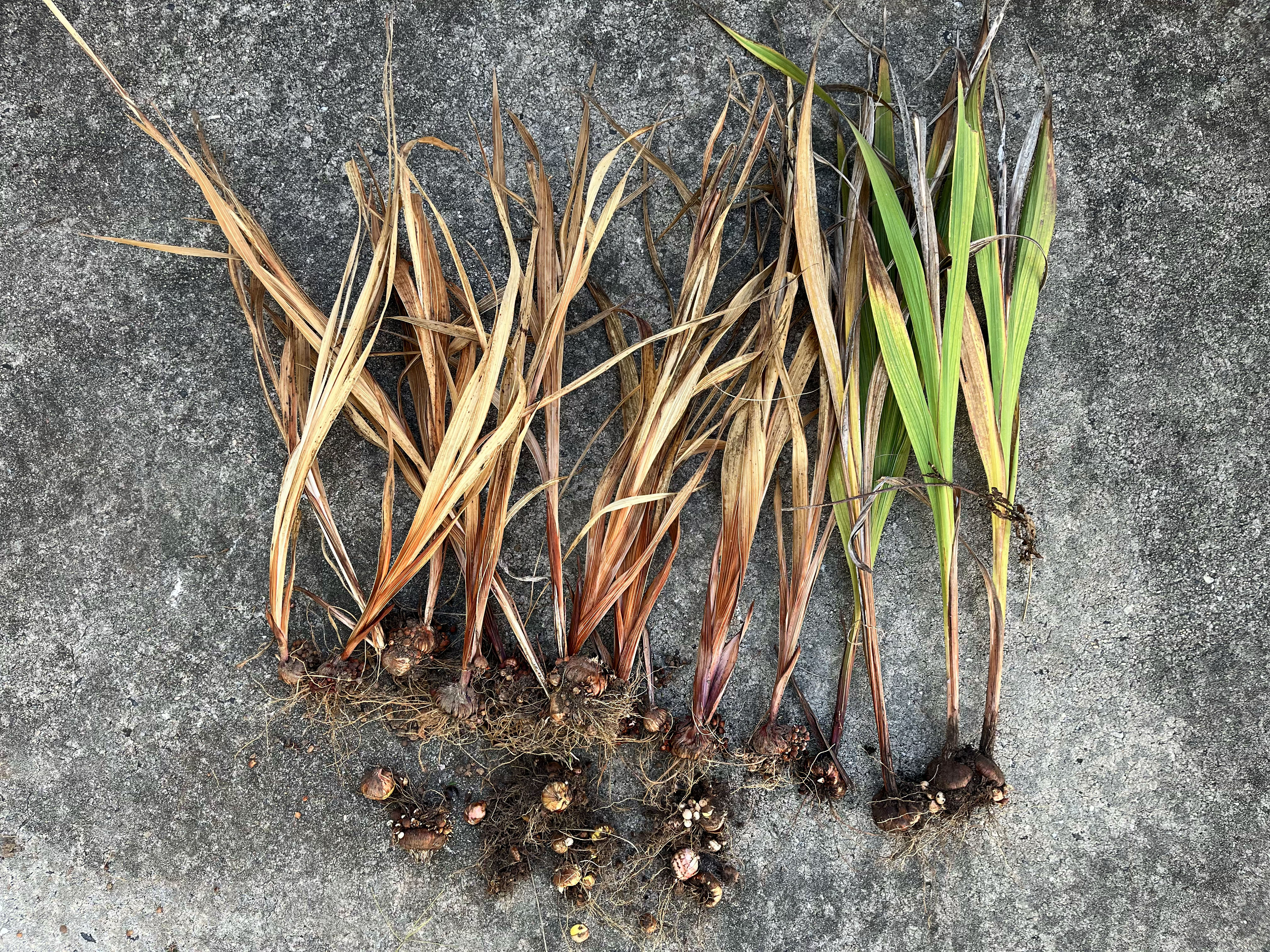Overwintering Tender Bulbs
go.ncsu.edu/readext?964343
en Español / em Português
El inglés es el idioma de control de esta página. En la medida en que haya algún conflicto entre la traducción al inglés y la traducción, el inglés prevalece.
Al hacer clic en el enlace de traducción se activa un servicio de traducción gratuito para convertir la página al español. Al igual que con cualquier traducción por Internet, la conversión no es sensible al contexto y puede que no traduzca el texto en su significado original. NC State Extension no garantiza la exactitud del texto traducido. Por favor, tenga en cuenta que algunas aplicaciones y/o servicios pueden no funcionar como se espera cuando se traducen.
Português
Inglês é o idioma de controle desta página. Na medida que haja algum conflito entre o texto original em Inglês e a tradução, o Inglês prevalece.
Ao clicar no link de tradução, um serviço gratuito de tradução será ativado para converter a página para o Português. Como em qualquer tradução pela internet, a conversão não é sensivel ao contexto e pode não ocorrer a tradução para o significado orginal. O serviço de Extensão da Carolina do Norte (NC State Extension) não garante a exatidão do texto traduzido. Por favor, observe que algumas funções ou serviços podem não funcionar como esperado após a tradução.
English
English is the controlling language of this page. To the extent there is any conflict between the English text and the translation, English controls.
Clicking on the translation link activates a free translation service to convert the page to Spanish. As with any Internet translation, the conversion is not context-sensitive and may not translate the text to its original meaning. NC State Extension does not guarantee the accuracy of the translated text. Please note that some applications and/or services may not function as expected when translated.
Collapse ▲
Freshly dug gladiolus corms drying out and awaiting storage.
The growing season is coming to an end, plants are starting to die back and the first frost is right around the corner. It’s time for some annual maintenance. One task is getting your tender bulbs out of the ground so they can be showstoppers in your garden next year.
The term ‘bulb’ used as an everyday term refers to all plants that grow from fleshy underground storage organs. While there is a difference between rhizomes, corms, and tuberous roots, it’s generally not important for the average gardener to fuss over. However, understanding the difference between hardy and tender bulbs is key. Hardy bulbs such as daffodils, hyacinths, irises, and snowdrops over-winter in the ground. Tender bulbs such as dahlias, calla lilies, gladiolus, and caladiums have a low survival rate over the winter. To avoid having to purchase these bulbs every year they must be dug up and stored indoors during winter months. In the spring, they can be replanted after the last frost.
When the foliage of tender bulbs dies back in the fall or has been killed by a frost, they can be cut back. Once cut back, dig them up for storage. Do not delay getting them out of the ground after frost or you may experience some rotting. When digging, begin several inches away from the plant so as to not knick the bulbs. Damage allows for pathogens to spread diseases. Shake off excess soil and wait to do any dividing until the spring because any damage will increase the risk of rotting during storage.
Bulbs then need to dry or cure before being stored. Discard or address bulbs with signs of damage, disease or insects. To cure, lay them out in a well ventilated area out of direct sunlight. Most bulbs will only take a few days and some can take a couple of weeks. Turning the bulbs periodically will facilitate the drying process.
Bulbs can be stored between 2-3 layers of peat moss, sand, vermiculite, sawdust, or wood shavings. You should avoid packing bulbs in an airtight container; instead, choose something ventilated such as a paper bag or cardboard box. Make sure individual bulbs do not touch. Once packed, label them and they can finally be put away for the winter. Optimal storage temperatures can vary depending on species, but choose a cool location that does not freeze. Ideal places include an unfinished area of a basement, root cellar, or unheated garage that does not freeze.
Check bulbs a few times throughout the season removing any that show signs of disease or rot. If they seem too dry, like they have shriveled, you can moisten the packing medium with water in a spray bottle. If they are too moist, take them out and let them air dry before repacking.
Next spring after the threat of frost has passed, bulbs can be replanted for a stunning addition of color and foliage. While this process may take some time and leg work in the fall it’s an economical way of having unique plantings. For more information about landscape gardening, contact N.C. Cooperative Extension, Richmond County Center at (910) 997-8255. In addition, follow us on Facebook or visit our website for upcoming events and up to date information.



